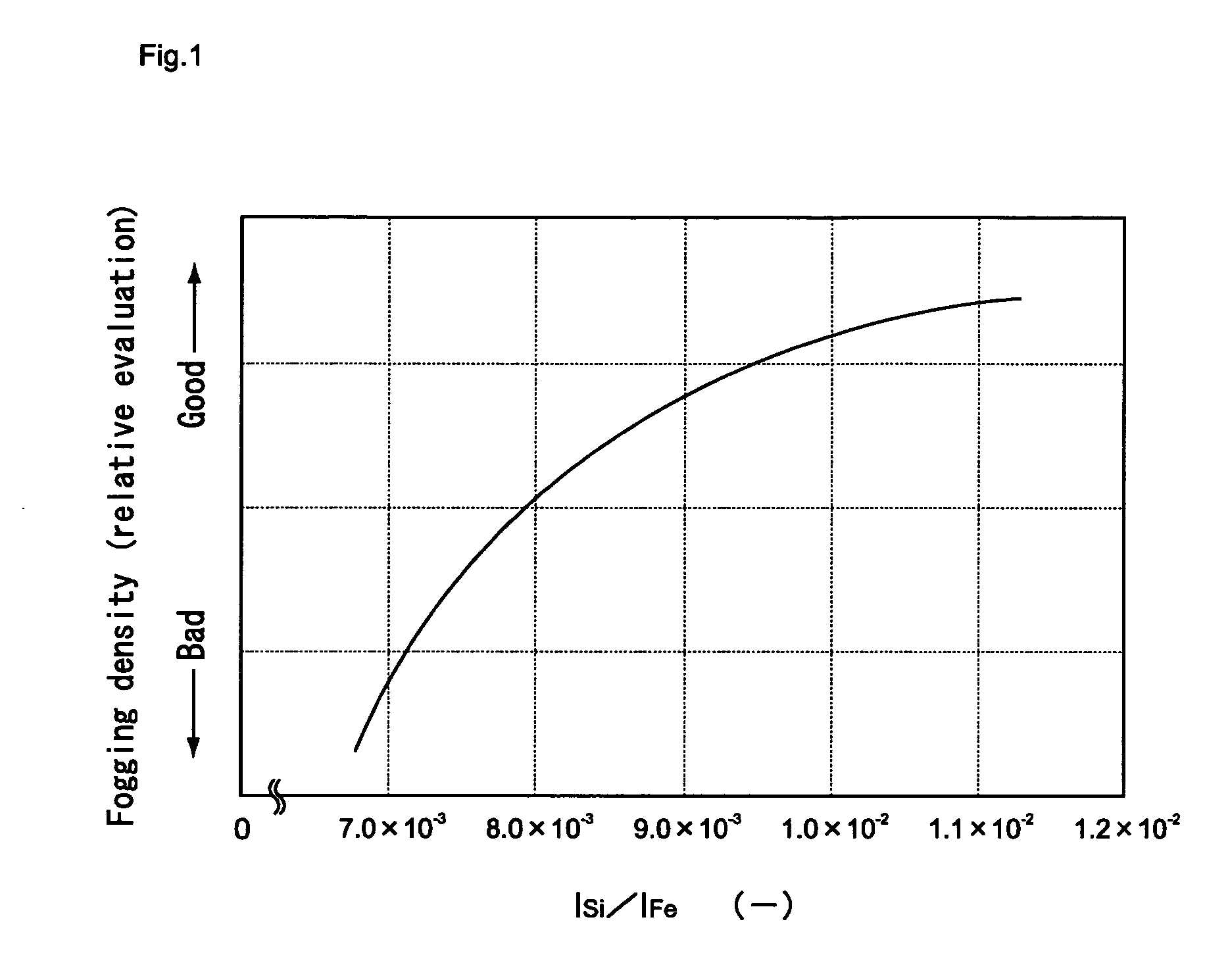Toner for electrostatic latent image development and image forming method
a technology of latent image and toner, applied in the field of toner for electrostatic latent image development and image forming method, can solve the problems of reducing the charge quantity of the developing sleeve, affecting the quality of the image, so as to achieve uniform thickness and high quality. the effect of uniform thickness
- Summary
- Abstract
- Description
- Claims
- Application Information
AI Technical Summary
Benefits of technology
Problems solved by technology
Method used
Image
Examples
first embodiment
[0043] A first embodiment is directed to a toner for electrostatic latent image development which is used for an image forming apparatus including an electrophotographic photoconductor and a developing sleeve which is arranged close to the electrophotographic photoconductor, the toner being externally added with at least silica and titanium oxide to toner particles containing a magnetic powder, wherein assuming Si strength of the toner as ISi, Ti strength of the toner as ITi and Fe strength of the toner as IFe when these strengths are measured by using a fluorescent X-ray analyzing device, the following relationships (1) and (2) are satisfied, an average degree of circularity of the toner particles is set to a value which falls within a range from 0.940 to 0.960, and a surface average gradient of the developing sleeve (Δa) is set to a value which falls within a range from 0.1 to 0.25 rad.
9.0×10−3≦ISi / IFe≦1.0×10−2 (1)
6.0×10−3≦ITi / IFe≦8.0×10−3 (2)
1. Toner Particles
(1) Basic Co...
second embodiment
[0149] A second embodiment is directed to an image forming method in which a toner for electrostatic latent image development which is externally added with at least silica and titanium oxide to toner particles containing a magnetic powder is applied to a magnetic jumping method which uses an electrophotographic photoconductor and a developing sleeve arranged close to the electrophotographic photoconductor, wherein as the toner for electrostatic latent image development, the image forming method uses a toner for electrostatic latent image development which satisfies the following relationships (1) and (2) and sets Si strength of the toner as ISi, Ti strength of the toner as ITi and Fe strength of the toner as IFe when these strengths are measured by using a fluorescent X-ray analyzing device, and sets an average degree of circularity of the toner particles to a value which falls within a range from 0.940 to 0.960 and a surface average gradient (Δa) of the developing sleeve to a valu...
example 1
1. Preparation of Developing Sleeve
[0160] Bead blasting treatment is applied to a sleeve having a length of 300 mm which is made of SUS316 under predetermined blasting treatment conditions (a bead size, a bead collision speed) thus preparing a developing sleeve (S1) as shown in Table 1.
[0161] Here, a surface average gradient (Δa) of the developing sleeve is measured in accordance with JIS B0601. That is, the surface average gradient (Δa) is measured by the three-dimensional interference microscope WYKO NT1100 type (made by Veeco Instruments) under the following condition.
magnification of measuring lens: 10 times
measuring mode: VSL
measuring size: 2438×482 μm
sampling: 820.96 nm
[0162] The ten-point average roughness (Rz) and the average interval (Sm) of the developing sleeve are measured in accordance with JIS B0601 by using a surface texture measuring instrument (SURFCOM 1400D: made by Tokyo Seimitsu Co., Ltd.).
2. Formation of Toner for Electrostatic Latent Image Develop...
PUM
 Login to View More
Login to View More Abstract
Description
Claims
Application Information
 Login to View More
Login to View More - R&D
- Intellectual Property
- Life Sciences
- Materials
- Tech Scout
- Unparalleled Data Quality
- Higher Quality Content
- 60% Fewer Hallucinations
Browse by: Latest US Patents, China's latest patents, Technical Efficacy Thesaurus, Application Domain, Technology Topic, Popular Technical Reports.
© 2025 PatSnap. All rights reserved.Legal|Privacy policy|Modern Slavery Act Transparency Statement|Sitemap|About US| Contact US: help@patsnap.com



